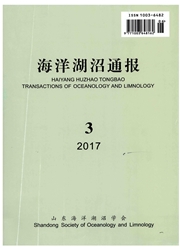

 中文摘要:
中文摘要:
用继代保藏法(液体保藏和固-液双相保藏)和固定化保藏法保藏雨生红球藻(Haemato—coccus pluvialis),对保藏4个月后雨生红球藻存活率、相对生长速率常数和叶绿素。的含量进行了探讨。研究结果表明:雨生红球藻保藏后,其存活率、相对生长速率常数和叶绿素a的含量由高到低依次为:液体保藏、固-液双相保藏和固定化保藏。液体保藏最高存活率为93.84%,相对生长速率常数为0.4648d^-1,叶绿素a的含量下降11.91%。实验结果证明,固定化保藏法较适合菌种作较长时期的保藏。
 英文摘要:
英文摘要:
In this study, succeeding preservation (liquid-culture-medium method and solidliquid-culture-medium method) and immobilization storage were used to preserve Haematococcus pluvialis in low temperature and dim lights. According to the survival rate, the specific growth rate and the content of chlorophyll-a, the results showed the descending sequence of preservation methods is. liquid-culture-medium method, solid-liquid-culture-medium method and immobilization storage. After four months, the survival rate reached 93. 84%, the specific growth rate of the algae reached 0. 4648 d^-1 , and the content of chlorophyll-a decreased by 11.91% in liquid-culture-medium method. So succeeding preservation is suitable to be used in research for its simplicity and high survival rates, while immobilization storage is suitable to be used for relative long term preservation.
 同期刊论文项目
同期刊论文项目
 同项目期刊论文
同项目期刊论文
 Statistical experimental methods for optimizing the cultivating conditions for Rhodococcus erythropo
Statistical experimental methods for optimizing the cultivating conditions for Rhodococcus erythropo 期刊信息
期刊信息
